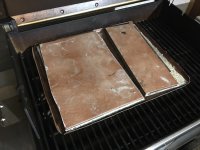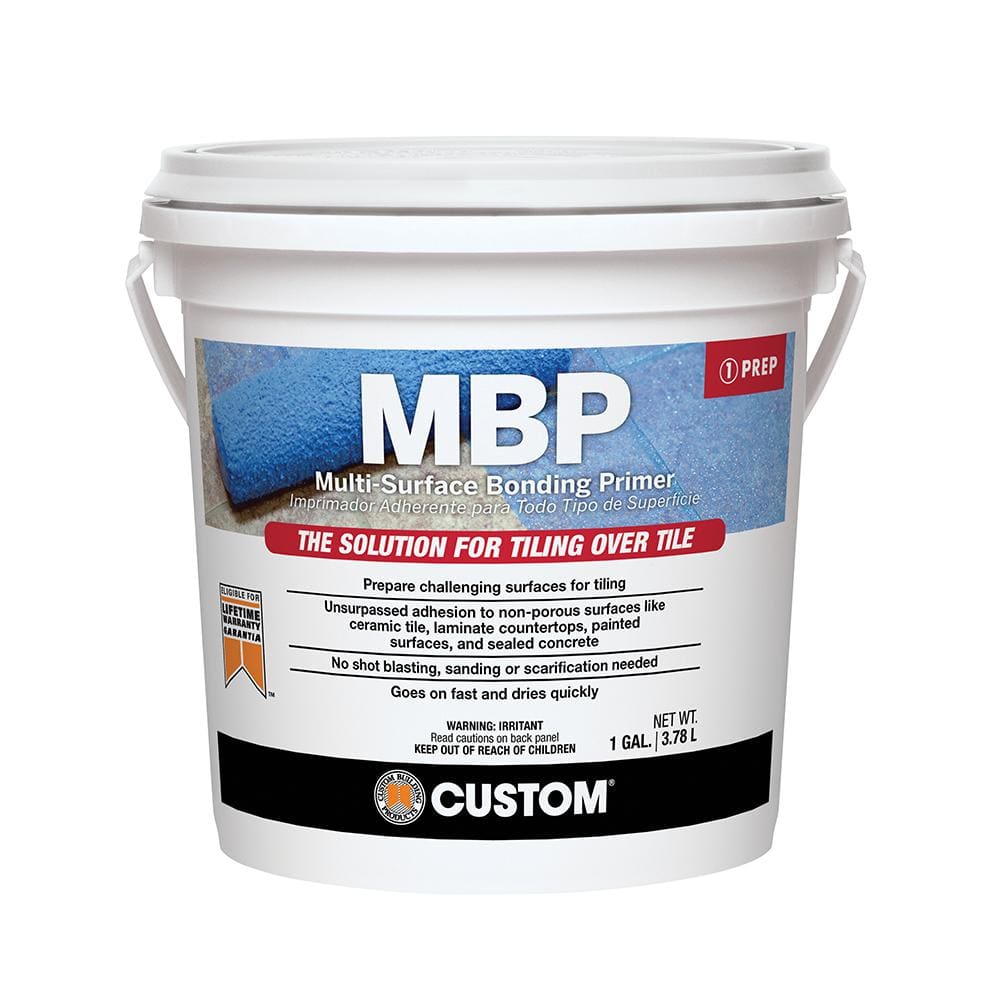Grant Cunningham
TVWBB Pro
My latest Genesis "cook"...

We're remodeling our kitchen, changing the footprint of the cabinets and island, but didn't want to tear up and replace the whole room full of ceramic tile. Trouble is, the tile we have isn't made any longer; in fact, there's nothing even close to it in any of the tile catalogs or dealers. Even the size (13" square) isn't common today. So, our only choice is to salvage all of the existing tile we took out for the new cabinetry.
If you've never tried taking up ceramic tile, it's an exercise in frustration. The thinset the installers used back in the '90s is remarkably tough stuff; it's far more flexible than what I've run into before, and hangs onto the tile like superglue. Using every trick I've learned over the years, I still had a breakage rate of about 80%. Then I got the bright idea of taking up the tile and backer board in one piece, planning to deal with the mess later.
As I thought about it, I suspected that whatever was holding the tile to the backer might soften if it were heated. So, I threw an old cookie sheet into the Genesis, set just the center burner to about 1/4, and "cooked" each tile at 200 degF for an hour. Once done, a putty knife easily peeled the board from the tile. A little scraping of any remaining adhesive while it was still warm produced clean tiles.
I did a bunch of full tiles before turning my attention to those that had snapped before I changed tactics; these two pieces were dirty, but easily salvaged thanks to the Genesis!
And I didn't even need to use a rub!

We're remodeling our kitchen, changing the footprint of the cabinets and island, but didn't want to tear up and replace the whole room full of ceramic tile. Trouble is, the tile we have isn't made any longer; in fact, there's nothing even close to it in any of the tile catalogs or dealers. Even the size (13" square) isn't common today. So, our only choice is to salvage all of the existing tile we took out for the new cabinetry.
If you've never tried taking up ceramic tile, it's an exercise in frustration. The thinset the installers used back in the '90s is remarkably tough stuff; it's far more flexible than what I've run into before, and hangs onto the tile like superglue. Using every trick I've learned over the years, I still had a breakage rate of about 80%. Then I got the bright idea of taking up the tile and backer board in one piece, planning to deal with the mess later.
As I thought about it, I suspected that whatever was holding the tile to the backer might soften if it were heated. So, I threw an old cookie sheet into the Genesis, set just the center burner to about 1/4, and "cooked" each tile at 200 degF for an hour. Once done, a putty knife easily peeled the board from the tile. A little scraping of any remaining adhesive while it was still warm produced clean tiles.
I did a bunch of full tiles before turning my attention to those that had snapped before I changed tactics; these two pieces were dirty, but easily salvaged thanks to the Genesis!
And I didn't even need to use a rub!

